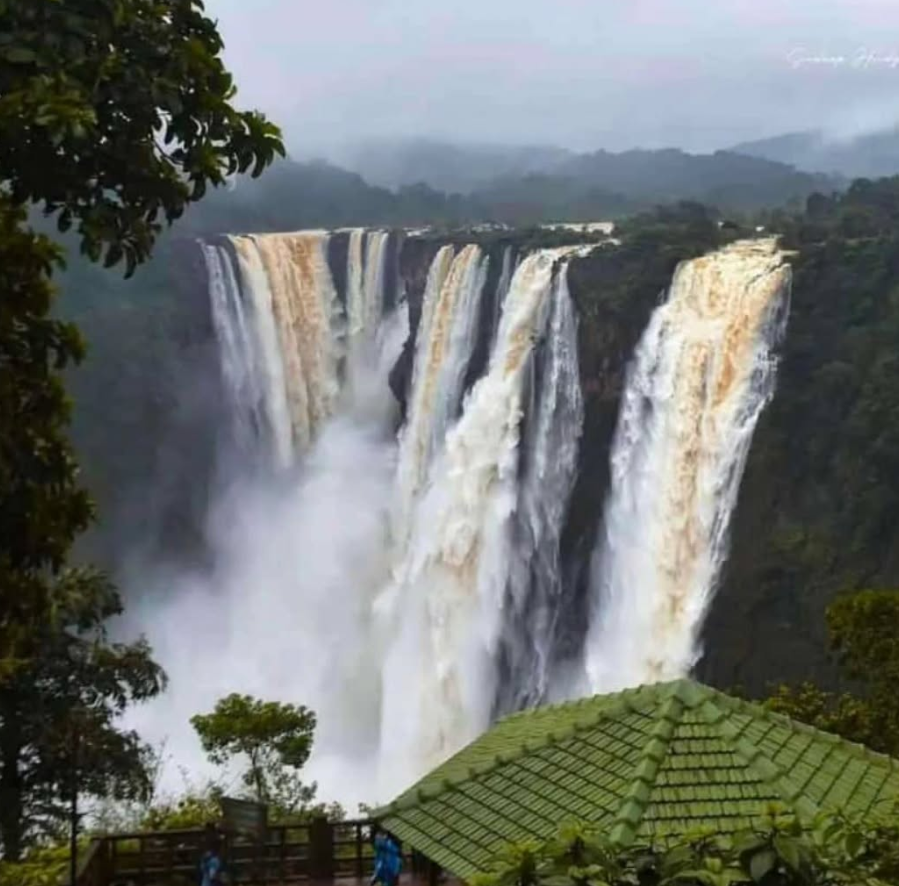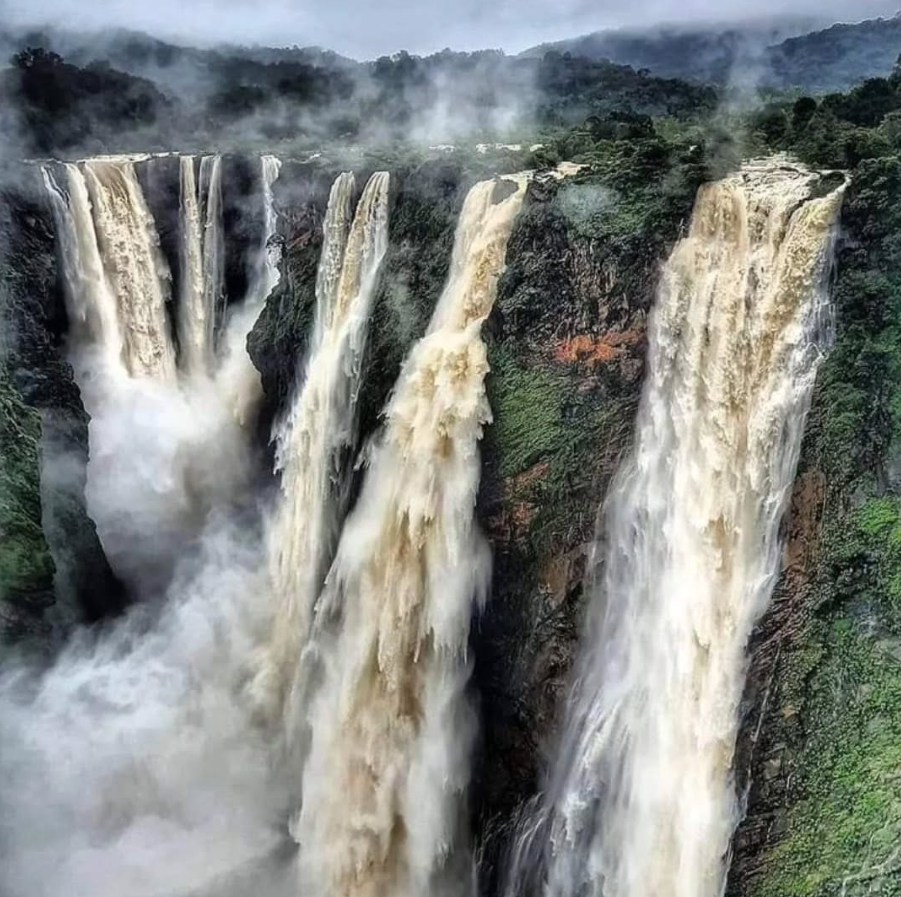Can You Hike Around Jog Falls? Discover Trails, Tips, and Thrills
Exploring the Magnificence of Jog Falls
Jog Falls, situated in Karnataka, India, is the country’s second-highest waterfall and a globally renowned natural wonder. Plunging from a height of 830 feet (253 meters), this segmented waterfall consists of four distinct cascades: Raja, Rani, Rocket, and Roarer. During the monsoon season, these streams merge to form a single, powerful torrent, creating a spectacle of awe-inspiring beauty.
A Natural Marvel Worth Visiting
The unique feature of Jog Falls is its unbroken, dramatic plunge, distinguishing it from tiered waterfalls. It originates from the Sharavathi River, which flows through the dense forests of the Western Ghats, adding a serene backdrop to this breathtaking wonder.
Is Jog Falls a Hiker’s Paradise?
Hiking Around Jog Falls: Trails and Adventures
Jog Falls is a treasure trove for hikers, offering a mix of challenging and serene trails:
- Steps to the Base:
- Description: This steep trail with 1,400 steps takes you to the base of the falls.
- Difficulty: Moderate to difficult.
- Highlight: Offers a unique perspective of the falls from below.
- Forest Trails:
- Description: Paths through dense greenery surround the falls.
- Difficulty: Moderate.
- Highlight: Provides a chance to explore local flora and fauna.
- Sharavathi Backwaters Trail:
- Description: Trails along the serene Sharavathi backwaters.
- Difficulty: Easy to moderate.
- Highlight: Ideal for peaceful walks with scenic views.
- Jog Falls Viewpoint Hike:
- Description: Short hikes lead to several viewpoints around the falls.
- Difficulty: Easy.
- Highlight: Offers panoramic views of the falls and the surrounding gorge.
Best Time to Visit Jog Falls
Seasons and Their Impact on Your Experience
- Monsoon (June to September):
- The falls are at their peak flow, creating a mesmerizing sight. However, trails can be slippery, so caution is advised.
- Post-Monsoon (October to February):
- Ideal for hiking, as the weather is pleasant and the water flow is steady but manageable.
- Summer (March to May):
- The falls may have less water, but the trails are dry, making hiking easier.
Historical and Cultural Significance of Jog Falls
Jog Falls is not only a natural wonder but also a site of historical and cultural importance:
- Ancient Origins:
- The falls have been revered for centuries, with mentions in local folklore.
- The area around the falls has been inhabited since ancient times, with evidence of early settlements nearby.
- Colonial Era:
- Jog Falls gained attention during British rule in India when it became a popular destination for British officers.
- Early infrastructure, like pathways and viewing points, was developed during this time to make the falls more accessible.
- Modern Development:
- The construction of the Linganamakki Dam in 1964 on the Sharavathi River helped regulate the water flow.
- Today, the falls are a significant tourist attraction, drawing visitors from across the globe.

Photography Tips for Jog Falls
- Best Spots for Photography:
- Viewpoints: The main viewpoint near the parking area offers panoramic views.
- Base of the Falls: Capture the towering height and misty spray.
- Nearby Trails: Forest trails and backwater areas provide serene, natural backdrops.
- Timing for Perfect Shots:
- Golden Hours: Sunrise and sunset provide warm, soft lighting.
- Monsoon Magic: During heavy rains, the falls are at their fullest and most dramatic.
- Essential Photography Gear:
- Use a wide-angle lens to capture the entire waterfall.
- Bring a tripod for stable shots, especially in low light.
- Carry lens protection or a waterproof case during monsoon.
- Creative Angles and Perspectives:
- Experiment with angles to highlight the height and flow of the falls.
- Include elements like nearby greenery or rocks for depth and scale.
- Drone Photography:
- If allowed, drones can capture breathtaking aerial views of the falls and surrounding landscape.
Capture the Essence of Jog Falls
Photography at Jog Falls goes beyond the waterfall itself. Consider these additional elements for diverse and memorable photos:
- Wildlife: Capture monkeys, birds, and other local fauna.
- Cultural Shots: Document the vibrant local life, including nearby villages and markets.
- Reflections: The Sharavathi backwaters provide a mirror-like surface for creative reflection shots.
Geography and Formation of Jog Falls
Unique Geology Behind Jog Falls
Jog Falls is a segmented waterfall, meaning its four streams—Raja, Rani, Rocket, and Roarer—plunge separately, creating an artistic cascade. During the monsoon, these streams merge into a single powerful torrent, showcasing the raw force of nature.
- Sharavathi River: Originates in the Western Ghats and flows through dense forests before creating the falls.
- The Gorge: The deep chasm below the falls adds to their dramatic beauty and creates a natural amphitheater for the roaring waters.
How to Visit Jog Falls: A Complete Guide
Visiting Jog Falls is a rewarding experience, whether you’re traveling solo, with friends, or with family. Here’s everything you need to know to plan your trip:
Reaching Jog Falls by Road
- From Bengaluru (Bangalore):
- Distance: 400 km (approximately 7-8 hours).
- Route: Bengaluru > Tumkur > Shivamogga > Sagar > Jog Falls.
- Options: Self-drive, private taxis, or state-run buses.
- From Mangaluru (Mangalore):
- Distance: 180 km (approximately 4-5 hours).
- Route: Mangaluru > Udupi > Bhatkal > Jog Falls.
- Scenic Views: Coastal route offering glimpses of the Arabian Sea.
- From Goa:
- Distance: 250 km (approximately 6-7 hours).
- Route: Goa > Karwar > Honnavar > Jog Falls.
- Highlights: Combine your trip with coastal adventures.
Reaching Jog Falls by Train
- Nearest Railway Station: Talaguppa, located just 18 km from Jog Falls.
- Connections: Trains from major cities like Bengaluru and Mysuru connect to Shivamogga. From Shivamogga, a short train or road trip takes you to Talaguppa.
- Local Transport: Taxis and buses are available from Talaguppa to Jog Falls.
Reaching Jog Falls by Air
- Nearest Airport:
- Mangaluru International Airport: Approximately 180 km.
- Hubballi Airport: Approximately 165 km.
- Options: From the airport, hire a taxi or take a bus to Jog Falls.
Accommodation Near Jog Falls
Stay Options for Every Budget
- Budget-Friendly Stays:
- Karnataka Tourism Department’s Mayura Gerusoppa cottages are a great option.
- Affordable lodges and homestays in Sagar or Shivamogga.
- Mid-Range Hotels:
- Decent hotels in Sagar with clean rooms and amenities.
- Luxury Stays:
- Premium resorts in Shivamogga offering modern comforts and stunning views of the Western Ghats.
Local Tips for a Smooth Visit
Things to Remember While Visiting Jog Falls
- Best Time to Visit: Monsoon and post-monsoon seasons (June to February).
- Peak Hours: Weekends are crowded, so visit early morning or late afternoon for tranquility.
- Local Food: Try the traditional Karnataka meals in nearby restaurants.
- Eco-Tourism: Respect nature, avoid littering, and stick to marked trails.





